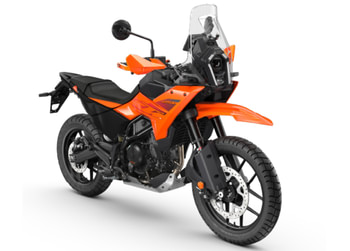2017 KTM 250 Duke review, road test
The 250 Duke tries to bridge the gap between the 200 and the 390.
Published on Apr 27, 2017 11:50:00 AM
51,931 Views
Follow us on



The 250 Duke is powered by a 249cc, single-cylinder, liquid-cooled engine that produces 30hp at 9,000rpm and 24Nm at 7,500rpm. The engine is capable of producing that much power because of a high compression ratio of 12.5:1. The engine is mated to a six-speed gearbox (one down, five up).
In the lower revs, until about 4,000rpm, the engine is quite dead. The bulk of the power is concentrated in the mid-range, beyond 4,000rpm. From there on, until the rev limiter cuts you off at 10,500rpm, the 250 Duke feels punchy. This requires you to stay in the most appropriate gear at all times – this is not a bike where you can be lazy with your shifts; if your speed drops, downshifting is almost compulsory to avoid the engine bogging in lower revs. The 250 Duke will pull until about 115kph fairly easily; in fact, we despatched the 0-100kph sprint in 9.02sec. Progress after 115kph, however,is very gradual. It is also worth noting that the throttle is not the most responsive one around.
The gearbox is pleasingly crisp and precise. You will, almost always, slot in the right gear as you tip it up and down, with very little play on the pedal. However, we did occasionally notice the gear slip to a false neutral when shifting between third and fourth. The gearbox experience is further enhanced by the slipper clutch. Wheel hop is considerably – though not completely – eliminated, allowing you to be more confident with downshifts. The first gear is extremely short, which is great for navigating through traffic jams. At the other end of the spectrum, the sixth gear is tall, best for cruising on open roads. In fact, while cruising on the highway, we found it necessary to downshift to the fifth for overtaking.
The exhaust note is still quite tinny, which might become annoying on longer rides. Vibrations are surprisingly well-contained in the handlebar (you will barely feel them in your hands), but they are prominently present in the foot pegs no matter what your engine speed, and less prominently in the tank.
A major problem with the engine, however, is heating. The combination of traffic conditions and the sultry Mumbai heat resulted in the engine heating up quite quickly. The radiator fan would constantly grumble into life when riding around in traffic. The problem is further worsened by the exhaust piping. The exhaust leaves the engine and winds past the left flank of the bike, and this exposed portion produces tremendous amounts of heat, raising the temperature around the engine as well as your left ankle.
Copyright (c) Autocar India. All rights reserved.



















Comments
Member Login
Personal Details
No comments yet. Be the first to comment.